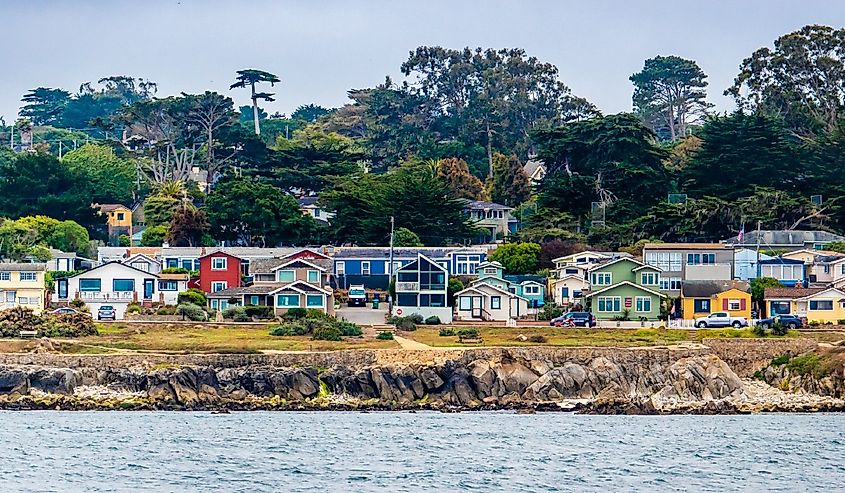The 14-billion-dollar call to save world’s vanishing kelp forests – Oceanographic Magazine

Report on the Global Funding Initiative for Kelp Forest Conservation and Sustainable Development
Introduction and Call for Action
An international consortium of researchers has issued a formal recommendation for a US$14 billion investment from governments, philanthropic organizations, and private investors. The funding is designated for the protection and restoration of global kelp forest ecosystems, which are critical to achieving multiple Sustainable Development Goals (SDGs). This initiative represents a multi-stakeholder partnership, directly aligning with SDG 17 (Partnerships for the Goals), by uniting diverse sectors towards a common environmental and developmental objective.
The Kelp Forest Challenge: A Framework for SDG 14
The proposed investment underpins the Kelp Forest Challenge, a global mission with clear targets that directly contribute to SDG 14 (Life Below Water). The primary objectives are:
- To protect 3 million hectares of existing kelp forests by 2040.
- To restore 1 million hectares of degraded kelp forests by 2040.
Achieving these targets is essential for the conservation and sustainable use of marine and coastal ecosystems, as outlined in SDG Target 14.2.
Ecosystem Significance and Contribution to Global Goals
Kelp forests, which occupy nearly one-third of the world’s coastlines, provide essential ecosystem services valued at an estimated $500 billion annually. Their health is intrinsically linked to the successful implementation of several SDGs.
- SDG 13 (Climate Action): As significant carbon sinks, kelp forests play a vital role in mitigating climate change by absorbing atmospheric carbon dioxide.
- SDG 1 (No Poverty) & SDG 2 (Zero Hunger): These ecosystems serve as crucial nursery habitats for commercial fisheries, thereby supporting coastal livelihoods and contributing to global food security.
- SDG 8 (Decent Work and Economic Growth): The immense biodiversity supported by kelp forests underpins local and national economies through fishing and tourism.
- SDG 14 (Life Below Water): Kelp forests are foundational to marine biodiversity, providing shelter and sustenance for a vast array of species.
Threats and Implications for Sustainable Development
A significant decline in kelp forest coverage, estimated at up to 60% over the last fifty years, poses a direct threat to progress on the SDGs. The primary drivers of this degradation undermine key sustainability targets:
- Rising Ocean Temperatures: A direct consequence of climate change, this threat highlights the urgency of SDG 13 (Climate Action).
- Pollution: Land- and sea-based pollution degrades marine habitats, counteracting the objectives of SDG 14 (Life Below Water).
- Sea Urchin Overgrazing: This ecological imbalance disrupts marine food webs and biodiversity, further compromising ecosystem resilience.
Financial Framework and Strategic Alignment
The US$14 billion funding target, detailed in a study published in the journal Biological Conservation, was derived from global conservation cost data and extensive expert consultation. This financial benchmark strategically positions kelp forest conservation alongside other high-profile marine initiatives, including mangrove and coral reef restoration. The initiative’s alignment with frameworks such as the UN Climate Champions’ Ocean Breakthroughs Initiative reinforces its role as a critical component of the global strategy to achieve the Sustainable Development Goals, particularly those related to climate and ocean health.
Analysis of the Article in Relation to Sustainable Development Goals
1. Which SDGs are addressed or connected to the issues highlighted in the article?
-
SDG 14: Life Below Water
- The article’s central focus is on the protection and restoration of kelp forests, which are critical marine and coastal ecosystems. It discusses their importance for marine biodiversity, the threats they face from pollution and overgrazing, and the need for their conservation.
-
SDG 13: Climate Action
- The article directly links kelp forests to climate change by highlighting their role in carbon absorption and identifying rising ocean temperatures as a primary threat to their survival. Protecting these ecosystems is presented as a nature-based solution for climate mitigation and adaptation.
-
SDG 17: Partnerships for the Goals
- The article features a call to action for “governments, philanthropies, and ocean investors” to form a partnership and commit significant financial resources ($14 billion). This emphasizes the need for multi-stakeholder collaboration to achieve conservation goals.
2. What specific targets under those SDGs can be identified based on the article’s content?
-
Under SDG 14 (Life Below Water):
- Target 14.1: By 2025, prevent and significantly reduce marine pollution of all kinds. The article explicitly mentions “pollution” as one of the key threats leading to the decline of kelp forests.
- Target 14.2: By 2020, sustainably manage and protect marine and coastal ecosystems to avoid significant adverse impacts… and take action for their restoration. The core proposal of the article is to “protect three million hectares and restore one million hectares of kelp forests.”
- Target 14.5: By 2020, conserve at least 10 per cent of coastal and marine areas. The goal to protect three million hectares of kelp forests directly contributes to the conservation of marine areas.
-
Under SDG 13 (Climate Action):
- Target 13.1: Strengthen resilience and adaptive capacity to climate-related hazards. Restoring kelp forests, which are threatened by “rising ocean temperatures,” enhances the resilience of coastal ecosystems against climate impacts.
-
Under SDG 17 (Partnerships for the Goals):
- Target 17.3: Mobilize additional financial resources for developing countries from multiple sources. The call for a “$14 billion” commitment from a combination of governments, philanthropies, and investors is a direct effort to mobilize financial resources.
- Target 17.16: Enhance the global partnership for sustainable development, complemented by multi-stakeholder partnerships. The initiative is led by an “international team of researchers” and seeks to build a global coalition of funders and actors, embodying the spirit of this target.
3. Are there any indicators mentioned or implied in the article that can be used to measure progress towards the identified targets?
Yes, the article provides several specific, quantifiable indicators that can be used to measure progress:
- Area of kelp forests protected: The article sets a clear target to “protect three million hectares” of kelp forests by 2040. This serves as a direct indicator for progress on SDG Target 14.5.
- Area of kelp forests restored: The goal to “restore one million hectares” of kelp forests by 2040 is a measurable indicator for SDG Target 14.2.
- Financial resources mobilized: The fundraising target of “$14 billion” is a key performance indicator to track the success of the partnership and financial mobilization efforts under SDG Target 17.3.
- Rate of ecosystem decline: The statistic that “as much as 60% have vanished over the past fifty years” acts as a baseline indicator against which future protection and restoration efforts can be measured. Halting or reversing this trend would indicate success.
- Economic value of ecosystem services: The valuation of kelp forests at “$500 billion annually” can be used as an indicator to demonstrate the economic benefits of achieving conservation and restoration goals.
4. Table of SDGs, Targets, and Indicators
| SDGs | Targets | Indicators Identified in the Article |
|---|---|---|
| SDG 14: Life Below Water |
14.1: Reduce marine pollution. 14.2: Protect and restore ecosystems. 14.5: Conserve coastal and marine areas. |
– Hectares of kelp forest restored (Target: 1 million by 2040). – Hectares of kelp forest protected (Target: 3 million by 2040). – Reduction in the rate of decline from the baseline of 60% loss over 50 years. |
| SDG 13: Climate Action | 13.1: Strengthen resilience and adaptive capacity to climate-related hazards. | – Area of kelp forests (a carbon-absorbing ecosystem) protected and restored to enhance resilience against rising ocean temperatures. |
| SDG 17: Partnerships for the Goals |
17.3: Mobilize financial resources. 17.16: Enhance the global partnership. |
– Total funds committed by governments, philanthropies, and investors (Target: $14 billion). – Number and type of stakeholders engaged in the Kelp Forest Challenge. |
Source: oceanographicmagazine.com
What is Your Reaction?
 Like
0
Like
0
 Dislike
0
Dislike
0
 Love
0
Love
0
 Funny
0
Funny
0
 Angry
0
Angry
0
 Sad
0
Sad
0
 Wow
0
Wow
0
















































:focal(1500,1000)/https://media.globalcitizen.org/a6/9a/a69a4720-d8a1-4715-b596-18738d03c05c/rotary_polio_hero_image.jpg?#)







/countries/sri-lanka/photo-credit---dmc-sri-lanka.tmb-1200v.jpg?sfvrsn=dc298bcc_1#)




















